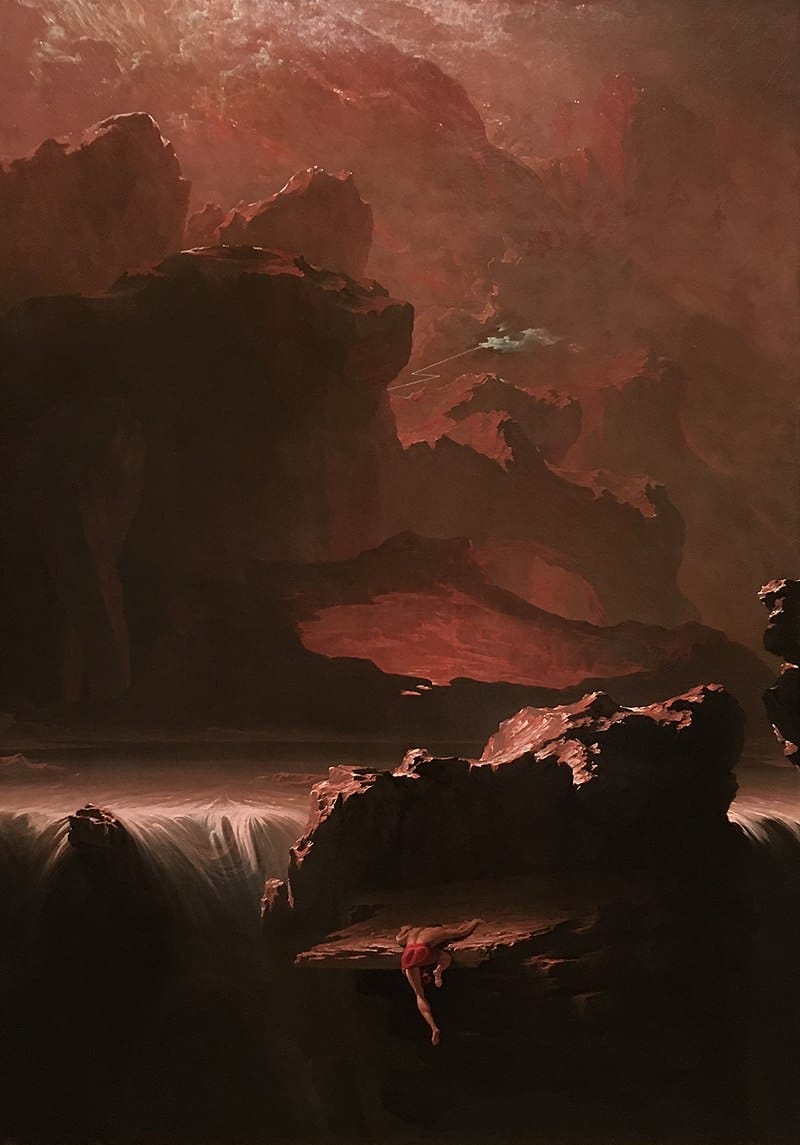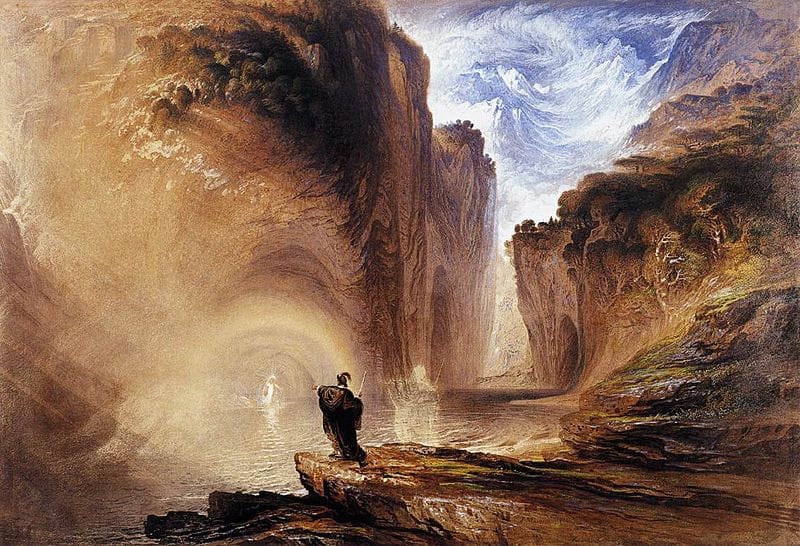Byron's 'Manfred', John Martin and Romanticism
Romanticism in English art began, many argue, with the painting below, where a Byronic hero is dwarfed by an overwhelming landscape. This is Sadak in Search of the Waters of Oblivion, an oil painting by John Martin from 1812. The splendid nonsense of the painting's title and the solitary figure at the bottom likely inspired both Byron and Shelley among others (it's still a matter of academic debate).

Martin, influenced by Milton's Paradise Lost and William Blake, popularized a style that while unquestionably Romantic is really more about divine judgment and the Christian Apocalypse. Martin made a lot of money from this genre and by the 1820's he was the most popular English painter of his day, much to the horror of John Ruskin, Wordsworth, Thackeray and other highbrow critics (they preferred J.M.W. Turner). Up until the 1850's, Martin continued to produce a series of paintings with themes like The Fall of Babylon, Destruction of Pompeii and Herculaneum, The Eve of the Deluge, The Destruction of Sodom and Gomorrah, The Great Day of his Wrath and The Last Judgment and he inspired the English-born American artist Thomas Cole (more pictures here and here). Ironically, the apocalypse popularized by Martin would arrive before too long: Darwin and evolution.
Byron in many ways parallels him, although Byron's apocalypse was more personal and inspired by years of classical Greek and Roman education, not scripture. Manfred (1816-17) is the most overwrought of these poems (fascinating for all that) and he wrote it after fleeing England to Lake Geneva when his marriage collapsed, pursued by scandalous allegations that he had committed incest with his half-sister Augusta.
Is the poem autobiographical? It would appear so. Manfred appeals to the Witch of the Alps which many interpret as a confession that Manfred feels an incestuous love for his sister Astarte: "I loved her, and destroy'd her!..." Manfred ends up rejecting the Witch's help and he dies later in the poem, rejecting all other spiritual assistance. Sure enough, in 1837, Martin was drawn to the subject. This is Manfred and the Alpine Witch.

Martin reached his own apocalypse in the 1830's when he almost went bankrupt over his visionary plans for improving London's water supply and sewage system. With the Manfred paintings perhaps he was as autobiographical here as Byron had been in his poem.
